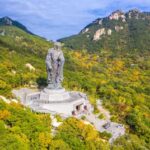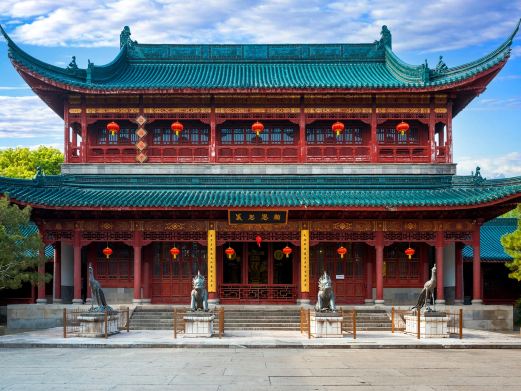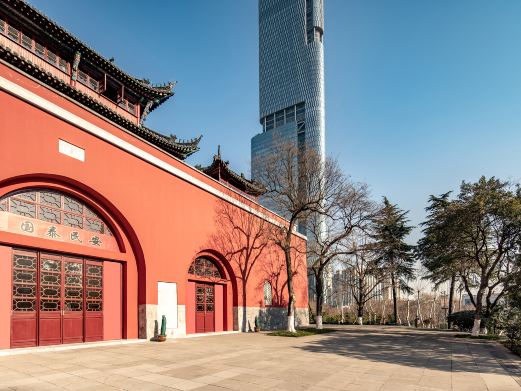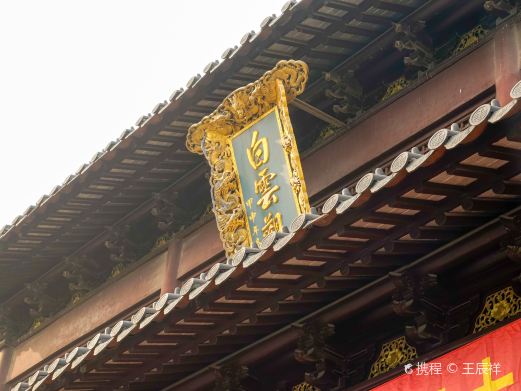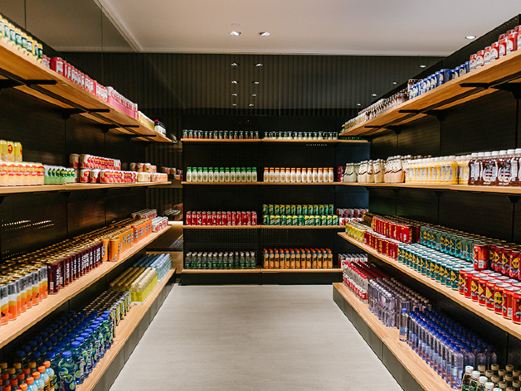The Liuhe Pagoda is close to the Qiantang River Bridge. Climbing the tower offers a view of the Qiantang River scenery. This pagoda was originally built by a famous monk in the Northern Song Dynasty to suppress the Qiantang River tide. From the outside, the nearly 60-meter ancient pagoda has 13 floors. Each floor has many small windows, and 104 iron bells are hung on the upturned eaves. But in fact, there are only seven floors inside the tower.
The structure of ‘seven bright and six dark’ is very unique. The park is not large. After entering the gate and walking a short distance, you will reach the foot of the ancient pagoda. Inside the Liuhe Pagoda, you can climb. The higher you go, the narrower the stairs become. Climbing will be a bit strenuous, feeling like climbing a small attic. You can go out on each floor to view the scenery and overlook the distance from different heights. When you reach the top floor of the tower, you can see the surging Qiantang River right below. The Qiantang River Bridge spans both banks, and the buildings and greenery on both banks of the river are in full view. The river breeze blows the iron bells, making a rich ancient charm. Since ancient times, the Liuhe Pagoda has been a place for literati and poets to watch the river and compose poems. It has been repaired in different dynasties. Inside the tower are also carved patterns of flowers, birds, beasts and flying immortals. Emperor Qianlong of the Qing Dynasty visited here and inscribed plaques for each floor. Now you can see plaques inscribed by later calligraphers in the tower. There are also ancient relics such as the provincial plaque of the Shangshu of the Southern Song Dynasty and the remaining stones of the ‘Forty-two Chapters Sutra’ written by forty-two people. There is a bronze bell beside the ancient pagoda. You can strike it a few times to listen to the bell sound of Liuhe. Walking up the steps behind the tower, there is the China Ancient Pagoda Expo Garden on the small western hillside. You can stroll among them and admire various miniature versions of ancient pagodas such as the Giant Wild Goose Pagoda in Xi’an, the Small Wild Goose Pagoda, the White Pagoda in Beijing, the Chongsheng Temple Pagoda in Dali, and the Wooden Pagoda in Yingxian. Through the brief introduction in front of each pagoda, you can get to know these famous ancient Chinese buildings.Opening hours: Open all year round from 07:00 to 17:30; open all year round from 07:00 to 16:55.

Preferential policies:

Children: Children under 6 years old (inclusive) and under 1.2 meters in height (inclusive) are free.

Minors: Minors aged 6 (excluding) to 18 (inclusive) can enjoy half price with valid certificates.
For inbound teenagers from Hong Kong, Macao and Taiwan, with valid identification such as Exit-Entry Permit for Travellers to and from Hong Kong and Macao, Exit-Entry Permit for Taiwan Residents to Travel to Mainland China or student certificates, they can all enjoy preferential policies. If you do not meet the above conditions for free admission or preferential treatment, please do not purchase half-price tickets and preferential tickets! If you have already purchased, please apply for a refund by yourself and re-book. Service facilities Parking lot: [Liuhe Pagoda Parking Lot, Xihu District, Hangzhou City] Reference price: 15 yuan/hour; Address: Liuhe Pagoda Parking Lot, Xihu District, Hangzhou City; Parking spaces: 400. Mother and baby room: Address: Tourist center.





